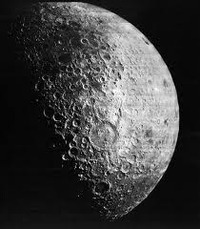 We’ve been reading a discussion on OpenManufacturing about the discovery of various elements on the lunar surface by NASA’s LCROSS project. LCROSS was a pretty daring expedition to determine if water is present in ice form within permanently shaded polar craters:
We’ve been reading a discussion on OpenManufacturing about the discovery of various elements on the lunar surface by NASA’s LCROSS project. LCROSS was a pretty daring expedition to determine if water is present in ice form within permanently shaded polar craters: - Place a spacecraft into Lunar orbit
- Separate into two spacecraft, orbiting on similar paths
- Adjust one spacecraft’s orbit to plunge into the surface at a designated point
- Observe and sample the resulting explosion plume from the second spacecraft
- Analyze the data to determine whether water was ejected
The astonishing news was that it turns out there are massive quantities of water (up to 5%) embedded in the lunar surface, which can only be the best news possible for future lunar exploration. Water is not only drinkable, but can be broken down into fuel and breathable oxygen.
But here’s the interesting part: there were other things discovered in the plume, including Silver, Gold, Mercury and a wide range of other elements. Further speculation involves magnesium, tellurium, indium, and selenium. In other words, it sounds like there’s a surface rich in all kinds of interesting stuff. Stuff you might be able to build with.
We suspect this richness may spur the development of onsite refiners that would be able to sift through the lunar soil to produce concentrated quantities of raw material. Raw material suitable for building things with fabrication equipment. That’s right – put a space-rated 3D Printer onsite to produce whatever is needed, using local materials.
If such a development occurred, we think a natural spin-off might be methods useful for designing inexpensive material recyclers that could augment 3D printers here on Earth. We’d imagine a device capable of accepting impure raw material and producing pure feed material for making operations. That and a lot of leftover waste, too.
Via New Scientist

